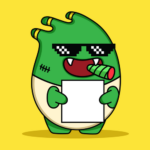
The rapid advancement of artificial intelligence (AI) has sparked widespread debate about its potential to disrupt various industries, including those traditionally dominated by human creativity. As AI systems become increasingly sophisticated, their ability to produce content (written, visual, or musical) raises questions about the future role of human creators.
Will AI ultimately take over creative jobs, or will the individual qualities of human creativity ensure that these roles remain secure? Our article briefly explores both sides of the argument, examining the potential for AI to revolutionize creative industries and the enduring elements of human creativity that AI cannot replicate. By analyzing specific examples from both perspectives, we aim to provide a better understanding of the evolving relationship between AI and creative work.
Yes, AI Will Take Many Creative Jobs
AI’s rapid advancement in creative fields demonstrates it will increasingly take over many creative jobs. Several factors support this viewpoint.
- Efficiency and Productivity: AI amplifies human creativity by producing creative content much faster than humans (does AI steal past work?). For example, AI algorithms like OpenAI’s GPT-4 can generate coherent and engaging text in seconds, which can be used in writing articles, blogs, and even books, freeing human creators to focus on more complex or enjoyable tasks.
- Cost Reduction: Employing AI is often more cost-effective than hiring human creators. For instance, AI can design logos, posters, and other graphics without requiring salaries or benefits, significantly reducing businesses’ costs.
- Consistency and Precision: Many users find AI helps them create consistent quality. In music production, AI tools compose melodies and harmonize them perfectly every time, eliminating human error and inconsistency.
- Versatility: AI’s ability to learn and adapt makes it versatile in creative fields. AI can write scripts, design video game levels, and even create visual art, as programs like DeepArt and RunwayML demonstrate.
- Personalization: AI excels in personalizing content to fit individual preferences. For example, AI can create customized marketing campaigns based on user data, offering a level of personalization that would be impractical for human teams to achieve on the same scale.
Here are a few examples of how AI is used by companies already:
- Article Writing: Tools like Jasper and Copy.ai can write articles and blog posts.
- Graphic Design: Platforms like Canva use AI to assist in creating professional-looking designs.
- Music Composition: AI can quickly compose music for various genres. It is so good, it is scary.
- Film Editing: Adobe Premiere Pro’s AI features can automate video editing tasks.
- Fashion Design: AI can design clothing and predict trends based on consumer data.
No, AI Will Not Take Over All Creative Jobs
While AI is advancing rapidly, there are several reasons why it CANNOT fully take over creative jobs.
- Human Touch and Originality: Creativity involves a human touch that AI cannot replicate. Human emotions, experiences, and insights lead to original and unique creations that AI lacks. For instance, a novel written by a human can convey deep emotions and complex characters in ways that AI-generated text cannot.
- Cultural and Social Context: Cultural and social contexts often influence creativity. Human creators draw from their cultural backgrounds and societal interactions, which AI cannot fully understand or replicate. This is evident in comedy writing, where humor is deeply tied to cultural nuances.
- Unpredictability and Innovation: Human creativity thrives on unpredictability and breaking norms, which AI struggles with due to its reliance on patterns and data. Innovations in art, music, and literature often come from thinking outside the box, a trait where humans excel.
- Ethical and Emotional Judgments: Creative jobs often require ethical considerations and emotional intelligence. For instance, a filmmaker decides how to portray sensitive issues responsibly, a task AI cannot handle with the same level of sensitivity.
- Collaboration and Interpersonal Skills: Many creative jobs involve collaboration and teamwork. AI cannot replicate the dynamic interaction between human minds in brainstorming sessions or collaborative projects. This is crucial in advertising, where creative teams develop campaigns through extensive collaboration.
Here are some examples to showcase how AI cannot take over creatives.
- Novel Writing: Authors like J.K. Rowling and George R.R. Martin create rich, immersive worlds that resonate emotionally with readers.
- Stand-up Comedy: Comedians like Dave Chappelle use cultural references and personal experiences to connect with and engage with audiences individually.
- Filmmaking: Directors such as Steven Spielberg and Christopher Nolan craft films with emotional depth and complex narratives.
- Art: Artists like Banksy produce thought-provoking pieces that challenge our societal norms.
- Advertising: Agency creative teams develop unique and innovative campaigns that resonate with diverse audiences.
Conclusion
While AI is making substantial strides in creative fields and can handle multiple tasks efficiently, it is unlikely to fully take over creative jobs. The human touch, cultural context, unpredictability, ethical considerations, and collaborative nature of creative work ensure that human creators will always play a vital role. Creators can protect themselves by focusing on what makes human creativity unique: emotional depth, cultural relevance, and innovative thinking. Embracing AI as a tool rather than a replacement can also enhance their work, allowing them to leverage AI’s strengths while maintaining the irreplaceable human elements of creativity.
Grab Yourself a “No AI” Dad Hat!
Introducing our new “No AI” dad hat, designed (by me) for those who value human creativity and individuality. This stylish and comfortable hat is available in classic white or black, making it a versatile addition to any wardrobe. Perfect for casual outings or making a statement, the “No AI” dad hat symbolizes a commitment to preserving the unique qualities of human ingenuity in an increasingly automated world. Show your support for human artists with this must-have accessory.




